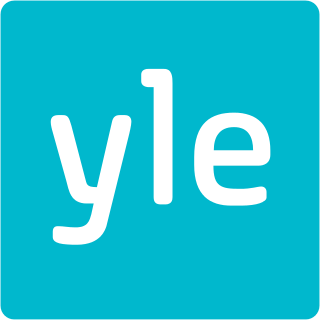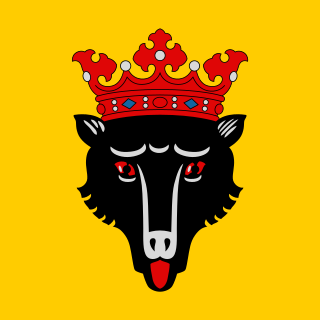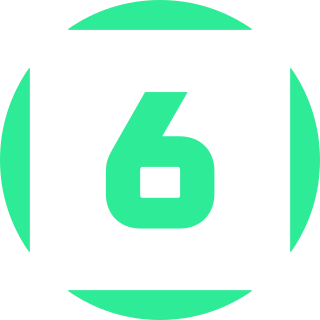A television broadcaster or television network is a telecommunications network for the distribution of television content, where a central operation provides programming to many television stations, pay television providers or, in the United States, multichannel video programming distributors. Until the mid-1980s, broadcast programming on television in most countries of the world was dominated by a small number of terrestrial networks. Many early television networks such as the BBC, CBS, CBC, NBC or ABC in the US and in Australia evolved from earlier radio networks.
Public broadcasting involves radio, television, and other electronic media outlets whose primary mission is public service. Public broadcasters receive funding from diverse sources including license fees, individual contributions, public financing, and commercial financing, and avoid political interference or commercial influence.

The Norwegian Broadcasting Corporation, commonly known by its initialism NRK, is the Norwegian government-owned radio and television public broadcasting company, and the largest media organisation in Norway.

Yleisradio Oy, abbreviated as Yle, translated into English as the Finnish Broadcasting Company, is Finland's national public broadcasting company, founded in 1926. It is a joint-stock company, which is 99.98% owned by the Finnish state and employs around 3,200 people in Finland. Yle shares many of its organisational characteristics with its British counterpart, the BBC, on which it was largely modelled.

MTV3 is a Finnish commercial television channel owned and operated by the media company MTV Oy, originally launched in 13 August 1957 as a programming block, becoming its own channel on 1 January 1993. It had the biggest audience share of all Finnish TV channels until Yle TV1 took the lead. MTV actually stands for Mainos-TV, due to the channel carrying advertising for revenue. Number 3 was added later, when the channel was allocated the third nationwide television channel and it generally became known as "Channel Three"—Finnish Broadcasting Company's Yle TV1 and Yle TV2 being the first two—and also to distinguish it from the later MTV Finland, which is a Finnish version of Paramount's MTV channel. From 1957 until 2001, the channel's logo was a stylised owl, changed to an owl's eye after an image renewal in 2001, which was then used until 2013. MTV3 has about 500 employees. It is also known as Maikkari. From 1986 to 1993, Kolmoskanava was a precursor to MTV3. It was shut down at midnight on December 31, and MTV3 immediately started broadcasting.

Television was introduced in Finland in 1955. Color television started in 1969 and was introduced gradually, with most programs in color by the late 1970s. All terrestrial analogue stations stopped broadcasting on 1 September 2007 after the introduction of digital television; cable providers were allowed to continue analog broadcasting in their networks until 1 March 2008.

Sveriges Television AB, shortened to SVT, is the Swedish national public television broadcaster, funded by a public service tax on personal income set by the Riksdag. Prior to 2019, SVT was funded by a television licence fee payable by all owners of television sets. The Swedish public broadcasting system is largely modelled after the system used in the United Kingdom, and Sveriges Television shares many traits with its British counterpart, the BBC.

Pori is a city in Finland and the regional capital of Satakunta. It is located on the west coast of the country, on the Gulf of Bothnia. The population of Pori is approximately 83,000, while the sub-region has a population of approximately 129,000. It is the 10th most populous municipality in Finland, and the eighth most populous urban area in the country.

SVT2, is one of the two main television channels broadcast by Sveriges Television in Sweden.
Yle FSR was the Swedish-language radio department of Finland's national broadcaster Yle (Yleisradio)
Finland participated in the Eurovision Song Contest 2005 with the song "Why?" written by Mika Toivanen and Steven Stewart. The song was performed by Geir Rönning. The Finnish broadcaster Yleisradio (Yle) organised the national final Euroviisut 2005 in order to select the Finnish entry for the 2005 contest in Kyiv, Ukraine. 24 entries were selected to compete in the national final, which consisted of four semi-finals and a final, taking place in January and February 2005. Six entries competed in each semi-final and the top three from each semi-final, as selected solely by a public vote, advanced to the final. Twelve entries competed in the final on 19 February where votes from six regional juries first selected the top six to advance to a second round. In the second round, votes from the public selected "Why?" performed by Geir Rönning as the winner with 30,648 votes.

Kutonen (Sixth) is a Finnish general entertainment channel that replaced the music-video oriented The Voice TV in September 2012. Kutonen is very closely related to its Danish counterpart 6'eren, sharing its visual branding and much programming with it, as well as having close strategic connections to other brands owned and operated by SBS in other European countries.
Finland participated in the Eurovision Song Contest 2002 with the song "Addicted to You" written by Maki Kolehmainen, Janina Frostell and Tracy Lipp. The song was performed by Laura. The Finnish broadcaster Yleisradio (Yle) returned to the Eurovision Song Contest after a one-year absence following their relegation from 2001 as one of the bottom six countries in the 2000 contest. Yle organised the national final Euroviisut 2002 in order to select the Finnish entry for the 2002 contest in Tallinn, Estonia. Twelve entries were selected to compete in the national final on 26 January 2002 where votes from six regional juries first selected the top six to advance to a second round. In the second round, votes from the public selected "Addicted to You" performed by Laura as the winner with 70,580 votes.
Radiomafia was a Finnish radio station owned by Yle and mainly directed to teenagers and young adults. It was established on 1 June 1990 and decommissioned on 12 January 2003. It was followed by YleX, with some of the programmes moved to other channels, such as YleQ, Yle Radio Suomi and Yle Radio 1.
Television began in Sweden in 1954 with test transmissions, prior to the opening of the first station, Radiotjänst, two years later. A second channel was launched in 1969. Commercial television arrived in the 1980s through cable television and in 1992, the country's first terrestrial commercial channel was launched.
Finland participated in the Eurovision Song Contest 2004 with the song "Takes 2 to Tango" written by Mika Toivanen and Jari Sillanpää. The song was performed by Jari Sillanpää. The Finnish broadcaster Yleisradio (Yle) returned to the Eurovision Song Contest after a one-year absence following their relegation from 2003 as one of the bottom five countries in the 2002 contest. Yle organised the national final Euroviisut 2004 in order to select the Finnish entry for the 2004 contest in Istanbul, Turkey. 20 entries were selected to compete in the national final, which consisted of two semi-finals and a final, taking place in January 2004. Ten entries competed in each semi-final and the top six from each semi-final, as selected solely by a public vote, advanced to the final. Twelve entries competed in the final on 24 January where votes from six regional juries first selected the top six to advance to a second round. In the second round, votes from the public selected "Takes 2 to Tango" performed by Jari Sillanpää as the winner with 98,987 votes.

Aunus Radio was a Finnish radio station operating in an area held by Finland in East Karelia during the continuation war.
Finland participated in the Eurovision Song Contest 2012 with the song "När jag blundar" written by Jonas Karlsson. The song was performed by Pernilla Karlsson. The Finnish broadcaster Yleisradio (Yle) organised the national final Uuden Musiikin Kilpailu 2012 in order to select the Finnish entry for the 2012 contest in Baku, Azerbaijan. 13 entries were selected to compete in the national final, which consisted of four performance shows and a final, taking place in January and February 2012. Six entries ultimately competed in the final on 25 February where votes from the public selected "När jag blundar" performed by Pernilla Karlsson as the winner.

Star Channel is a Finnish entertainment TV channel owned and operated by The Walt Disney Company through its local subsidiary The Walt Disney Company Nordic AB, filial i Finland. The channel was acquired by FNG Nordic in January 2012, and then relaunched as its current incarnation on 16 April that year.
Finland participated in the Eurovision Song Contest 2021 with the song "Dark Side" written by Aleksi Kaunisvesi, Joonas Porko, Joel Hokka, Niko Moilanen and Olli Matela. The song was performed by the band Blind Channel. The Finnish broadcaster Yleisradio (Yle) organised the national final Uuden Musiikin Kilpailu 2021 in order to select the Finnish entry for the 2021 contest in Rotterdam, Netherlands. Seven entries were selected to compete in the national final on 20 February 2021 where the combination of votes from seven international jury groups and votes from the public selected "Dark Side" performed by Blind Channel as the winner.










